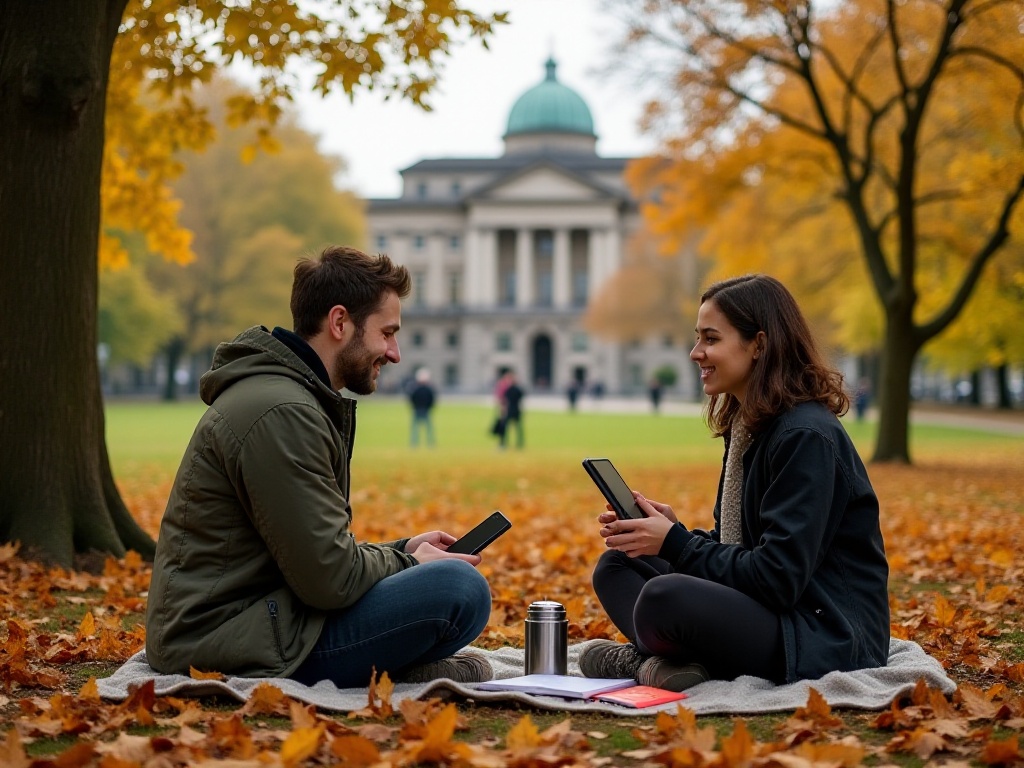
Opening Thoughts
Every Japanese food lover probably has had this fantasy: sitting alone in a late-night diner in some Tokyo alley, with a steaming bowl of tonkotsu ramen in front, savoring the rich broth, enjoying their own moment with food. However, reality often falls short of ideals. I remember my first time in Japan, even basic ordering was a struggle, let alone chatting with restaurant owners. But after years of "training" in Japan, I finally transformed from a customer who could only smile and nod to a "connoisseur" who could chat freely with restaurant owners. Today, let me share how I achieved this transformation step by step.
First Arrival
In early spring 2019, I set foot in Japan for the first time. Back then, my Japanese was limited to simple anime phrases like "Wow~sugoi" and "kawaii". As soon as I arrived in Tokyo, I couldn't wait to check out a popular ramen shop. At a corner in Shibuya, I found this supposedly "Michelin-recommended" restaurant.
There was already a long line outside the shop, and I reluctantly waited for nearly an hour. When it was finally my turn, looking at the vending machine's buttons covered in Japanese text, I instantly broke into a cold sweat. Each button had different prices marked next to it, some with small pictures, but most were pure text descriptions. Standing there, I felt like I was illiterate, completely clueless about which button would get me the ramen I wanted.
In the end, I could only point at the photos on the wall like an "illiterate" and say in broken English: "This one, please." The owner was a kind elderly man who smiled and said a long string of Japanese, probably confirming my choice of toppings and broth, but I could only keep nodding and saying "hai" like a parrot. Looking back now, that feeling was both embarrassing and helpless, but it was this experience that made me determined to seriously study Japanese.

The Turning Point
After returning home, I began to systematically plan my language learning journey. Through in-depth research and practice, I gradually developed a learning method that suited me. I discovered that to truly improve language skills while traveling, mere memorization isn't enough - thorough preparation and planning are necessary.
First came the adjustment in mindset. Many people pursuing language learning seek perfection, afraid of making mistakes and being laughed at, ending up restricting themselves. Actually, Japanese people are generally very friendly and tolerant of foreigners' Japanese language mistakes. Japanese friends often praised my "jouzu" Japanese, and although I knew it might be mere politeness, such positive encouragement really boosted my confidence.
In choosing learning content, I particularly emphasized practicality. Many language textbooks overly emphasize grammatical accuracy, but in actual communication, being able to accurately convey meaning is most important. For example, in restaurants, rather than obsessing over the difference between "masu" and "te" forms, it's more useful to remember practical sentences. Phrases like "Kore wa oishii desu ka" (Is this delicious?), "Osusume wa nan desu ka" (What do you recommend?), and "Karakunai mono wo onegaishimasu" (Please give me something not spicy) are frequently used and can make dining experiences much better.
Cultural understanding is also an indispensable part of language learning. Japan is a country that values etiquette, and many language habits are closely related to its culture. I learned about Japanese lifestyle and thinking patterns through watching Japanese dramas, anime, and reading Japanese literature. For instance, in Japan, when you hear store staff say "Irasshaimase" (Welcome), you should bow slightly in response; saying "Gochisousama deshita" (Thank you for the meal) after dining is also an important way to express gratitude. These details may seem trivial, but it's precisely these accumulations that make communication with Japanese people more natural and appropriate.

Practical Tips
During the actual learning process, I found that making good use of tools and resources is key to efficiency. There are many excellent language learning applications available now, and I dedicate 15-30 minutes daily to using these tools. I particularly like learning materials with situational dialogues because they're closer to real life. When learning dining-related conversations, I not only memorize words and sentences but also understand which situations they're most appropriate for.
Meanwhile, I also focus on creating opportunities for language practice. While in my home country, I meet Japanese friends through social platforms and practice speaking through text chat and voice calls. Although I often made mistakes at first, like pronouncing "koucha" (red tea) as "kucha," these experiences became interesting stories along my learning journey.
Most importantly, one must dare to step out of their comfort zone. I remember last year at an izakaya in Kyoto, I gathered courage to chat with the owner in Japanese. I was enjoying a particularly delicious grilled squid and tried to comment: "Kono ika, sugoku oishii desu ne" (This squid is really delicious). Unexpectedly, this simple compliment opened up the conversation, and the owner enthusiastically shared about the ingredients' sources and cooking methods, even teaching me some Kansai dialect. Although my Japanese wasn't very fluent and often needed the owner to repeat or slow down, this authentic language environment was indeed the best classroom.

Abundant Rewards
After these years of effort, my Japanese level has indeed made a qualitative leap. I can not only order food and ask for directions comfortably but also engage in simple daily conversations with locals. Most touching was last year at a long-established sushi restaurant in Osaka, when I inquired about various sashimi characteristics in Japanese, the owner smiled approvingly, praised my Japanese, and specially treated me to a cup of sake. At that moment, I felt the sense of recognition and belonging that language brings.
During my food exploration, I've also met many like-minded friends. Once at a late-night diner in Tokyo, I met a Japanese man who also loved food. We chatted from tempura frying techniques to udon specialties from different regions. Although my Japanese wasn't perfect, our common language of food brought us closer. Before leaving, he enthusiastically recommended several hidden food spots in the alleys, which became my later exploration treasures.
The improvement in language ability has also given me a deeper understanding of Japanese cuisine. Previously I could only choose from pictures when ordering, but now I can understand detailed menu descriptions and learn about each dish's cooking methods and characteristics. For example, sushi restaurant menus often mark "shun" (seasonal) ingredients, and by asking the owner, I learned to appreciate different seasonal delicacies. Spring bamboo shoots, summer eel, autumn matsutake mushrooms, winter fugu - each season has its unique flavors.

Concluding Thoughts
Looking back on these years of learning, I deeply feel that language learning and food exploration complement each other. It's the love for food that drives me to continuously improve my language skills, and the improvement in language ability allows me to better understand and appreciate Japanese food culture.
From initially being flustered to now being able to chat freely with restaurant owners, this process has taught me that language is not just a communication tool but also a key to understanding a country's culture. Through language, we can delve into locals' lives and experience their ways of thinking and values. Each dining experience is an immersion in culture and a dialogue of hearts.
Now, I can confidently walk into any Japanese restaurant, not only accurately order the food I want but also chat with owners about ingredient origins and cooking techniques. Sometimes, owners will specially prepare hidden menu items for me because of this enthusiasm, a warm feeling of kindness that's hard to experience through pure sightseeing.
Actually, everyone's language learning journey is unique; what's important is finding methods and rhythms that suit oneself. Through food as an entry point, I found my learning motivation and direction. Each trip is a precious opportunity for language immersion, and each conversation is a window to foreign culture.
Next time I go to Japan, I look forward to discovering more food, meeting more friends, and building more bridges of communication through language. After all, food and language are both bonds connecting people, and these connections are the most precious rewards of travel.
Next
Learning Languages in Foreign Lands: An Immersive Experience Shared by a Travel Blogger
Explore the dynamic relationship between travel and language learning, examining how immersion enhances language skills and how linguistic abilities deepen travel experiences through cultural engagement and authentic interactions
One Person's Language Journey: Measuring the World with Footsteps, Making Travel the Best Language Classroom
Explore effective methods and benefits of learning languages through travel, combining immersive strategies with practical approaches, supported by digital tools and structured resources for enhanced language acquisition and personal growth
One Person's Language Learning Journey: My 90-Day Immersion Experience in a Rural Japanese Town
Explore how travel facilitates language learning through immersive environments, covering natural and structured learning methods, along with guidance on choosing suitable language programs and courses to enhance language skills while traveling
Next

Learning Languages in Foreign Lands: An Immersive Experience Shared by a Travel Blogger
Explore the dynamic relationship between travel and language learning, examining how immersion enhances language skills and how linguistic abilities deepen travel experiences through cultural engagement and authentic interactions

One Person's Language Journey: Measuring the World with Footsteps, Making Travel the Best Language Classroom
Explore effective methods and benefits of learning languages through travel, combining immersive strategies with practical approaches, supported by digital tools and structured resources for enhanced language acquisition and personal growth

One Person's Language Learning Journey: My 90-Day Immersion Experience in a Rural Japanese Town
Explore how travel facilitates language learning through immersive environments, covering natural and structured learning methods, along with guidance on choosing suitable language programs and courses to enhance language skills while traveling



